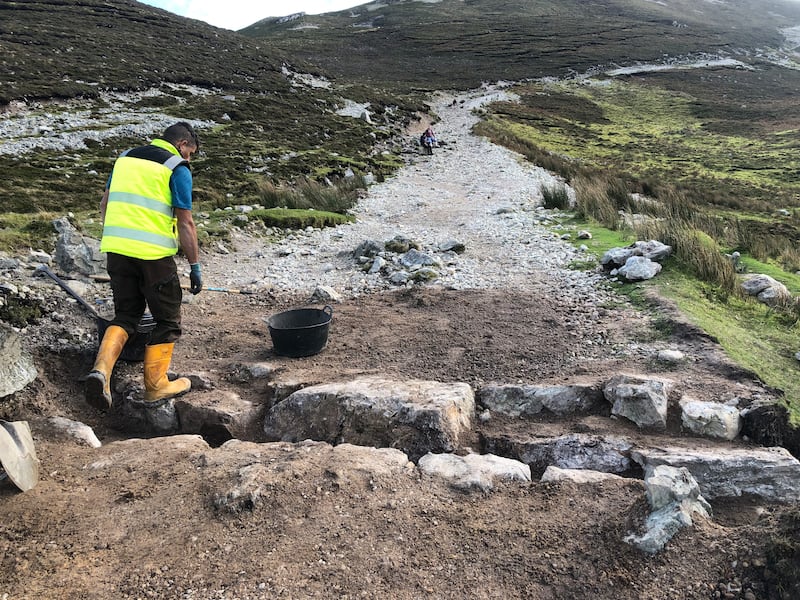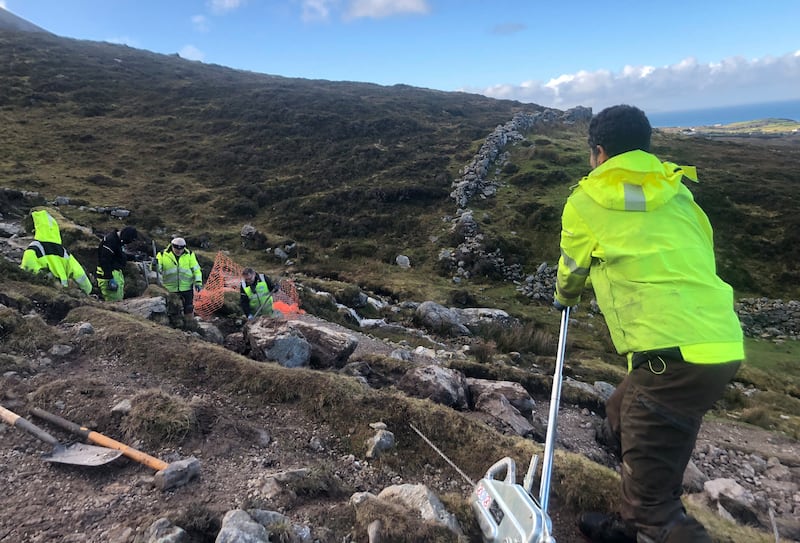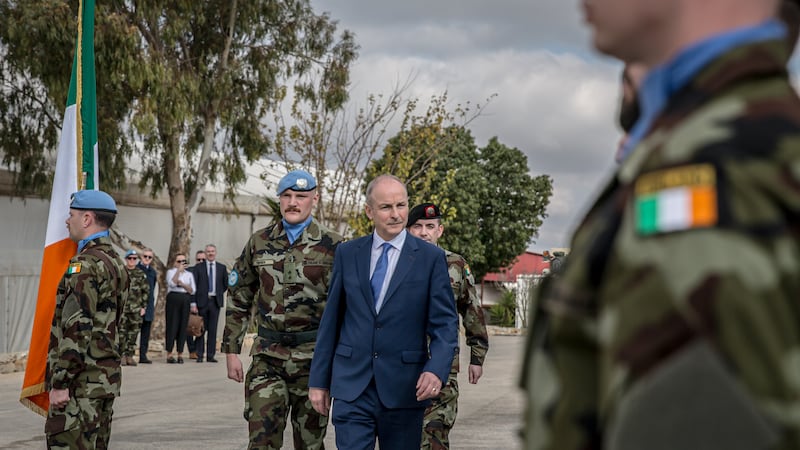A 4km stone pathway running from the base to the summit of Croagh Patrick in Co Mayo is almost complete, after more than three years of work by a team who moved thousands of tonnes of rock and soil to make the mountain safer and faster to climb.
The Croagh Patrick Path Team, led by Scotsman Matt McConway, includes Bernard Burke, Frank McNamara, Tulio de Jesus and David Doyle.
They have been working on the pathway for “over three years, through thick and thin, rain and shine, walking up the mountain 450 times, moving thousands of tonnes of rock and soil by hand, constructing a path where many thought it wasn’t possible”, Doyle said.
“Matt McConway’s expertise is in building mountain paths, which he has done throughout the UK. He tested pathways on two sections of Croagh Patrick in 2018, one at the cone towards the top and another nearer the bottom.”
RM Block
The pathway was decided on by the Croagh Patrick Stakeholders Group, formed in November 2015, as a community response to concerns over the condition of the mountain which some 120,000 people climb every year.
Among the stakeholders are the local Murrisk community, Mayo County Council, the Department for Rural and Community Development, the Catholic Church, South West Mayo Development Company, Mountaineering Ireland, Mayo Mountain Rescue, the Croagh Patrick Archaeological Society as well as tourism and adventure sectors.
It was December 2020 when the building of the pathway began involving McConway and the four men. All live locally, mainly in Westport, including Brazilian de Jesus who is married to a local woman.
“Mountaineering Ireland volunteers are true heroes of the project and have helped us week in week out in all weathers, while Leave no Trace ambassadors gave up their weekends to inform people about it,” de Jesus said.
Doyle has been climbing Croagh Patrick since he was 15 and the part of the job he has enjoyed most over the past three years has been climbing up and down to work each day. “I loved that, personally,” Doyle said.


The pathway is 2m wide, from top to bottom, and one of the greatest challenges was finding stones on the mountain for it. All work on the pathway was “done by hand, or with hand tools. It was more in keeping with the natural aesthetic of the area but it could mean carrying stones some distance at times. We tried to find them as close (to the pathway) as possible”, Doyle said. Work “could be tough physically but the most difficult part was the weather”, he said.
Meanwhile the stream of climbers “was constant all day, every day, with 99 per cent of the people encouraging and very positive about our work”, he said. As weekends were off, the annual Croagh Patrick climb on the last Sunday of July each year did not interfere with their work.
“The most difficult part of the job was the cone [towards the top]. The stones there are small and loose, with maybe up to 20 stones in a step while below it was about five or six,” Doyle said. Work on the cone was spread “over three summers and, altogether, took up to 60-65 per cent of the time we spent building the pathway over the last three years”.
The cone accounts for about half the climb of Croagh Patrick which, for an average climber, can take up to three hours, up and down. “That will certainly be faster now with the pathway,” Doyle said.
Progress on the pathway can be seen on the Climb the Reek YouTube channel.
- Join us for The Irish Times Inside Politics podcast live in Belfast on April 10th
- Sign up for push alerts and have the best news, analysis and comment delivered directly to your phone
- Find The Irish Times on WhatsApp and stay up to date
















